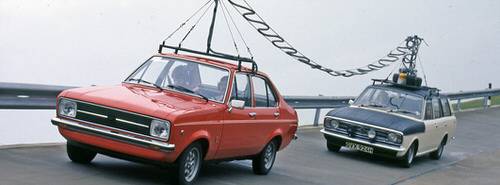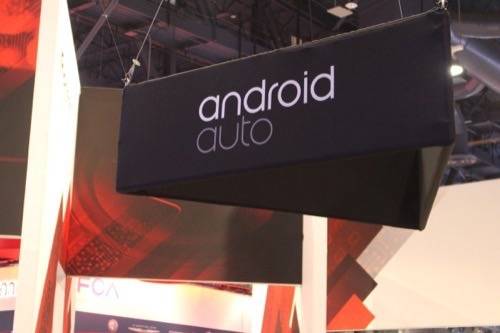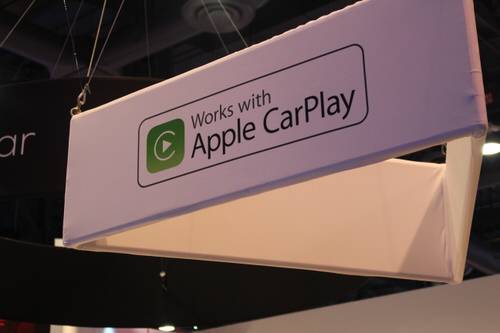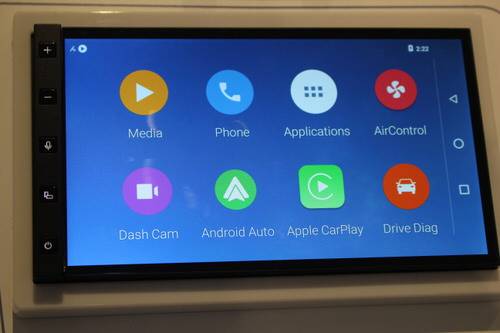
ReadWriteDrive is an ongoing series covering the future of transportation.
Every year, cars become a bigger deal at the annual Consumer Electronics Show. Demonstration of self-driving and game-like dashboard wizardry—from the likes of Mercedes, Ford, Volkswagen and Audi—were inescapable in Las Vegas at the 2015 event earlier this month.
You might logically conclude that, at last, this is the year of the connected car. Think again.
There’s little doubt that drivers want to maintain connectivity to the Web, social media and streaming infotainment in cars. But so-called innovations like app-based car keys, or using a television to set up your driving route, seem like solutions in search of problems that don’t exist.
Moreover, much of the gimmicky car technology at CES reveals how far we are from car connectivity that matters where it counts the most: in the actual driving experience.
I visited the show for signs that I could soon toss away the $15 plastic dashboard mount that keeps my smartphone in view from behind the wheel. That’s how I currently access my favorite navigation app, stream music, and (when fully stopped at a stoplight) check email or texts. Even if carmakers, Apple, or Google could integrate mobile communications safely into my car, that’s merely the easy precursor to truly meaningful car connectivity. But we’re not even there yet.
Conflicting Protocols

Charles Koch, a manager of new business development at American Honda, said the 2014 rollout of Honda’s Siri-based hands free functionality was a “tough launch.” Speaking at the Consumer Telematics Show 2015, held concurrent with CES, he told me:
When you bring these environments into the car, inevitably they are conflicting with other protocols that are happening in the [car’s dashboard] head unit. That’s going to take a while to straighten out.
Honda is not alone in needing time to work out technical and user experience challenges that have delayed integration with Apple and Google technology. “Everybody is having a really tough time,” he said, referring to delays faced by Mercedes and BMW. “What it taught us is that it’s very difficult to sew together all these different operating systems when they are not created at the same time.”

Chip Goetzinger, a connectivity manager at Nissan, agreed that it’s a challenge for competing systems to manage things “like arbitration of the audio stream coming out of the speakers.” For example, what happens when you’re streaming music from a Bluetooth-paired phone and the phone rings? What if, at the same time, you’re relying on voice-based navigation commands as you speed toward a highway exit that is quickly approaching?
“You need something to tie all the pieces together,” said Andy Poliak, director of business development at QNX, a BlackBerry unit that provides car-based software. “Whether it’s fast access to a backup camera, or dealing with a device’s microphone versus the car’s microphone and speaker, or warning indicators,” he said. “All of these things need to blend. You need a close coupling between all these devices, cloud backend applications, and embedded systems.”
Now, Add Business Conflicts
While the engineers and HMI experts are working out these issues, business managers at car companies and web companies have yet to sort out the core nature of their collaborations. “We’re in the business of building and selling cars, and the experience of the vehicle,” said Nissan’s Goetzinger. He rattled off these questions: “What is the experience like? Is it consistent with our brand? Who owns the data? What data do you have access to? Do we share the data?”
Without these answers, it will be tough for the auto industry to develop a robust connected car strategy. We’re not talking about the music streaming and social media I can already get by pairing my phone to the car—but the more vibrant connectivity that combines the vehicle’s core computer systems with services that help me navigate, fuel, park and maintain my car.
“It’s not Facebook. It’s not Twitter. And it’s not one of your streaming audio services,” said Goetzinger. “It’s going to be vehicle health information, remote access to information about the vehicle and your driving experience. We’re going to be in the business of pulling in information about the vehicle that only we can access or know.”
I don’t expect carmakers to gladly hand their brand and the monetization of this data over to Google and Apple.
Smart Cars Need Smart Cities

The plot gets even thicker, because as Bryan Mistele, chief executive of Inrix, told me in Vegas: “The connected car cannot happen without smart cities.”
Inrix is perhaps the most important connected car company you never heard of. It’s a 10-year-old outfit spun off from traffic prediction software at Microsoft. Inrix is getting data from—and sending it back to—navigation systems in 185 million cars.
The company, whose partner list that includes Audi, BMW, Ford, Mercedes, Toyota, Tesla and Volkswagen, uses hundreds of additional data sources to derive dynamic real-time information about traffic, fuel prices, parking and weather. That gets combined with data from car computers about speed, location, and heading—and even data points about windshield wipers and traction control.
When you add analytics to this big and deep data, you have the makings of true car connectivity. Finally, think about the power of community to provide an exponential increase in driver-generated content. It will come with apps like Waze that allow users to report roadside hazards or the presence of police.
It’s the value of the network effect that prompted Google to acquire Waze in 2013 for $1 billion. And that’s why companies like Cisco, IBM and Intel are so interested in this space.
By the end of CES, I started hearing rumors about these types of old guard technology companies, holding meetings in Vegas in hotel suites far from the floor of the convention center. I suspect that the future of car connectivity, still years away, is being built in these discussions between high-tech infrastructure companies, automakers and web startups—miles away from the buzz of the CES showroom floor.
Lead photo by Ford Europe










